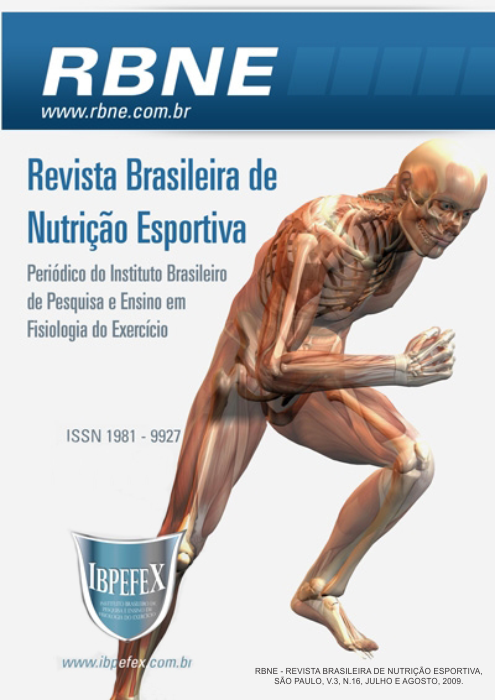Comparation of the difference of the reply of the cardiac frequency, the arterial pressure and the hydration in women submitted to the exercise in ergometrics bicycles horizontal and vertical
Abstract
The aerobic training comes very being used for the practitioners of physical activity, as much the athletes of high level how much the practitioners who search quality of life, in the academies and the streets. The objective was to compare the answers of the arterial pressure and the cardiac frequency in the bicycles horizontal and vertical, verifying if it had or not dehydration in both equipment. Our methodology was to analyze 8 individuals of the feminine sex between 30 and 40 years, all apparently healthful practitioner of aerobic training more than the 12 months and corporal weight between 50kg and 70kg. The test consisted of carrying through 30 minutes of pedalagem in each equipment, being that he was carried through a piss collection before and after each execution. 20 gauging of PA had been carried through and FC during the thirty minutes. The volunteers previously had been instructed not to ingest no type of drink up to 1 hour before each test, 24 hours later were carried through as the test in the other equipment, having kept the same applicability protocol. From the collected data it was verified that the equipment did not have significant difference in both, these results are been valid for the three evaluated item: PA, FC and dehydration, having been thus we conclude that the bicycles horizontal and vertical apparently exert equal physiological mechanisms in the analyzed variable, not having then significant difference
References
- American College of Sports Medicine, Recursos do ACSM para o Personal Trainer, Rio de Janeiro, 1a edição, p. 117, 2006.
- Antelmi, I.; e colaboradores. Recuperação da freqüência cardíaca após teste de esforço em esteira ergométrica e variabilidade da freqüência cardíaca em 24 horas em indivíduos sadios. Arquivos Brasileiros de Cardiologia. São Paulo. Vol. 90. Num. 6. Junho 2008. p. 1-9.
- Clausen, J.P. Effect of physical training on cardiovascular adjustments to exercise in man. Physiol Rev. Num. 57. 1977. p. 779-815.
- Coyle, E.F.; Gonzalez A.J. Cardiovascular drift during prolonged exercise: new perspectives. Exerc Sports Sci. Vol. 29. Num. 2. 2001. p. 88-92.
- Longhurst, J.C.; Stebbins, C.L. O Atleta de Forca. (Ed.) Clinicas Cardiologicas: o coração de atleta e a doença cardiovascular. Vol 3. Rio de Janeiro: Interlivros, p.413-429, 1997.
- McArdle, W.D., Fisiologia do Exercício, energia, nutrição e desempenho humano, 6 ed. p. 314-320 e 321-354. 2008.
- Nilsson, S.S. J.K., Simonsen, K Cardiovascular responses to static-dynamic work in young men, middle-aged athletes, and coronary patients. Int Rehabil Med. Vol. 5. Num. 4. 1983. p. 202-205.
- Pollock, M.; e colaboradores, Resistance exercise in individuals with and without cardiovascular disease: benefits, rationale, safety, and prescription. An Advisory From the Committee on Exercise, Rehabilitation, and Prevention, Concil on Clinical Cardiology, American Heart Association. Circulation. Num. 101. 2000. p. 828-833.
- Shephard, R.J. PAR-Q: Canadian home fitness test and exercise screening alternatives. Sports Med. Num. 5. 1992. p. 185-195.
Authors who publish in this journal agree to the following terms:
- Authors retain the copyright and grant the journal the right of first publication, with work simultaneously licensed under the Creative Commons Attribution License BY-NC which allows the sharing of the work with acknowledgment of the authorship of the work and initial publication in this journal.
- Authors are authorized to enter into additional contracts separately for non-exclusive distribution of the version of the work published in this journal (eg, publishing in institutional repository or book chapter), with acknowledgment of authorship and initial publication in this journal.
- Authors are allowed and encouraged to post and distribute their work online (eg, in institutional repositories or on their personal page) at any point before or during the editorial process, as this can bring about productive change as well as increase impact and impact. citation of published work (See The Effect of Free Access).






